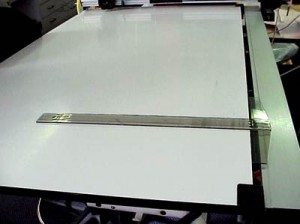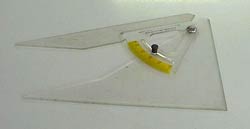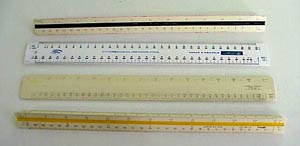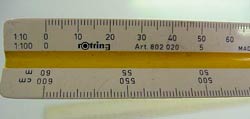Drafting Equipment
To successfully draw or draft you are going to need some specialist drafting equipment. This doesn’t have to be expensive drawing machines or computers however if you have access to a drawing machine then you may use it. Rotring produce some relatively cheap plastic drawing boards with the T square and adjustable set square built in. Enquire at your local technical drawing equipment shop. They will be able to help with all your drawing equipment needs. Remember you don’t need to get a great deal of expensive equipment.
Remember that you aren’t following these instructions to become a drafts-person but to relay your designs to others for their action or interpretation. As mentioned in nearly all the other web site pages concerned with contracts and documentation, I advise having a drafts-person fully qualified in this field to put the working drawings together for you.
What’s basically needed is a T-Square and Drawing Board
T square and drawing board
This will help you draw the lines straight and at perfect right angles when going from horizontal to vertical lines.
You’ll note that a great majority of man made building structure is horizontal or vertical lines. This isn’t just for our drawing convenience but really to do with fitting things together easily, balance and gravity.
An Adjustable Set Square unless you have the luxury of a drawing machine
Adjustable set square
This is to draw any lines that aren’t at right angles e.g. 45degrees
A2 or A3 Tracing Paper (ask for 110 weight as its much stronger)
We use this paper as it is designed to accept pencil lead and ink and helps keep the image that you draw sharp and clear. Ordinary papers will let the ink bleed into the paper and also tend to clog up the pens. DWG 56
Butter Paper or Detail Paper
This is similar to tracing paper but of a much lighter weight and therefore it should be quite cheap. It is used for sketching details to see if they work or developing sketched ideas and for quick layouts or a quick tracing of an original plan to try different options without committing to a final drawing.
Scale Rules with typical architectural scales on them i.e. 1:10, 1:20, 1:50,1:100
Scale Rules




